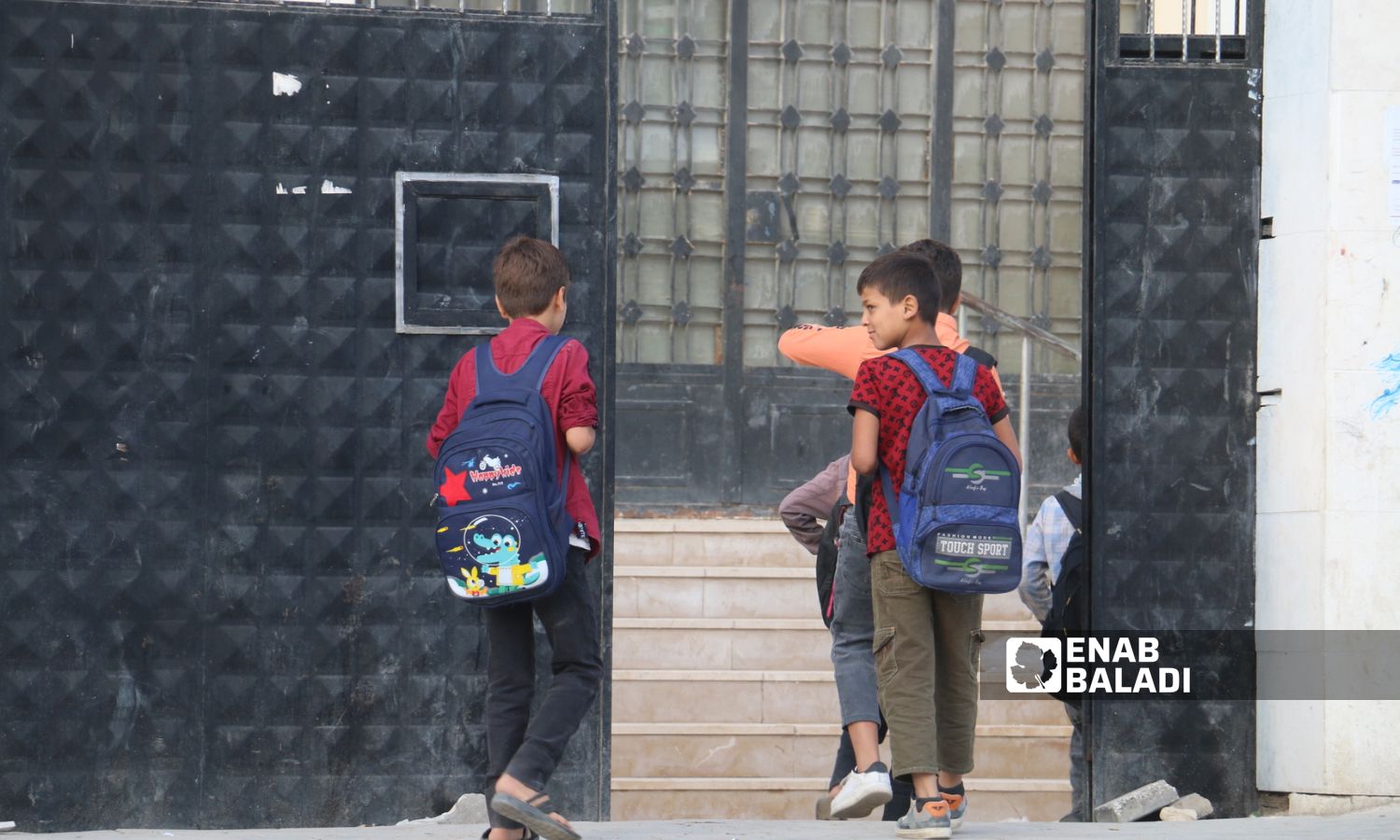



The new school year 2024-2025 has started for school students in Syria, within different areas of control.
Both the Syrian regime government and the Syrian Interim Government (SIG) in the northern Aleppo countryside, as well as the Autonomous Administration areas (northeast Syria), have announced the start of the school year.
As for the Syrian Salvation Government (SSG) controlling Idlib, it previously announced the start on September 28.
The Syrian regime government’s Council of Ministers stated today, Sunday the 8th of September, that 3.7 million Syrian students would begin the new school year today.
These figures do not include students enrolled in educational institutions in areas outside the control of the Syrian regime, in northwestern and northeastern Syria.
Schools in regime-controlled areas suffer from poor services, and classrooms are overcrowded with students.
The regime has also aimed to introduce educational materials related to its allies, Russia and Iran, into the curricula, including teaching the Russian language.
The Education Authority of the Autonomous Administration of North and East Syria (AANES) announced the start of the school year today for students in the areas it controls, through its official website.
The number of students enrolled in schools in AANES areas was not mentioned.
The administration controls areas in northeastern Syria, including the cities of Qamishli and Raqqa, parts of al-Hasakah governorate, as well as the cities of Ain al-Arab/Kobani, Ras al-Ain, and Manbij.
Similar to regime-controlled cities, schools suffer from severe service shortages.
Due to educational disparities between AANES and regime-controlled areas, residents face high costs to secure education for their children, as most prefer regime-recognized schools over “AANES schools.
A study published by the Omran Center for Strategic Studies highlights that the educational process in AANES areas is based on three main principles: ideological requirements, reliance on the Kurdish language, and the need for transformation and requalification of educational infrastructure.
The new school year also started in areas controlled by the Syrian National Army (SNA) and the Interim Government, which are supported by Turkey.
According to the official website of the Ministry of Education in the Interim Government, there are roughly 1.5 million students in secondary and primary stages (elementary and middle schools).
The National Army controls areas in northern Syria’s Aleppo countryside, including the cities of Jarablus, Afrin, al-Bab, and Azaz.
Additionally, it controls the cities of Ras al-Ain and Tal Abyad, in the northern Raqqa countryside.
In the northern and eastern Aleppo countryside, areas under the control of the Interim Government have seen teachers resigning from public schools for various reasons, primarily seeking salaries that meet family needs.
The number of teachers who resigned from 2023 until the end of February exceeded 500, according to statistics obtained by Enab Baladi from Mohamed Sabah Hamidi, head of the teachers’ union in Azaz in northern Aleppo countryside.
This situation has caused a crisis in the educational process due to the shortage of staff and the unavailability of qualified individuals to meet urgent needs.
Protests and strikes by teachers in the northern and eastern Aleppo countryside have been frequent, demanding higher monthly incomes, protection of teachers’ rights, and protests against administrative corruption and the deteriorating educational process.
In areas controlled by Hayat Tahrir al-Sham (HTS), the new school year will begin on September 28.
The Directorate of Education in Idlib issued a circular on August 18, starting school for students on the mentioned date.
Administrative work will begin on September 21, and the school year will end on May 29 next year.
Schools in areas close to front lines such as Sarmin, Afes, Nayrab in eastern Idlib, Darat Izza, and Atarib in western Aleppo countryside, often see school activities suspended due to the security situation.
Parents refrain from sending their children to school after repeated bombardments by regime forces, causing casualties among students and teachers.
The education sector in Idlib is struggling with infrastructure and services for students and teacher salaries, who repeatedly protest for wage increases, while shelling continues despite cease-fire agreements.
In November 2023, Ahmad al-Hasan, director of education in Idlib, told Enab Baladi that schools in the area lack textbooks, stating that 500,000 students are in need of books.
There are no official statistics on the actual number of students in Idlib and its countryside schools, with schools affected by bombardments from regime and Russia forces, especially during increased escalations in October 2023.
The United Nations Office for the Coordination of Humanitarian Affairs (OCHA) stated that military escalation in northwestern Syria has significantly impacted access to education services for 2.2 million school-aged children.
It added that 2.2 million school-aged children reside in northwestern Syria, with at least one million out of school, noting the particularly dire situation in displacement camps.
if you think the article contain wrong information or you have additional details Send Correction